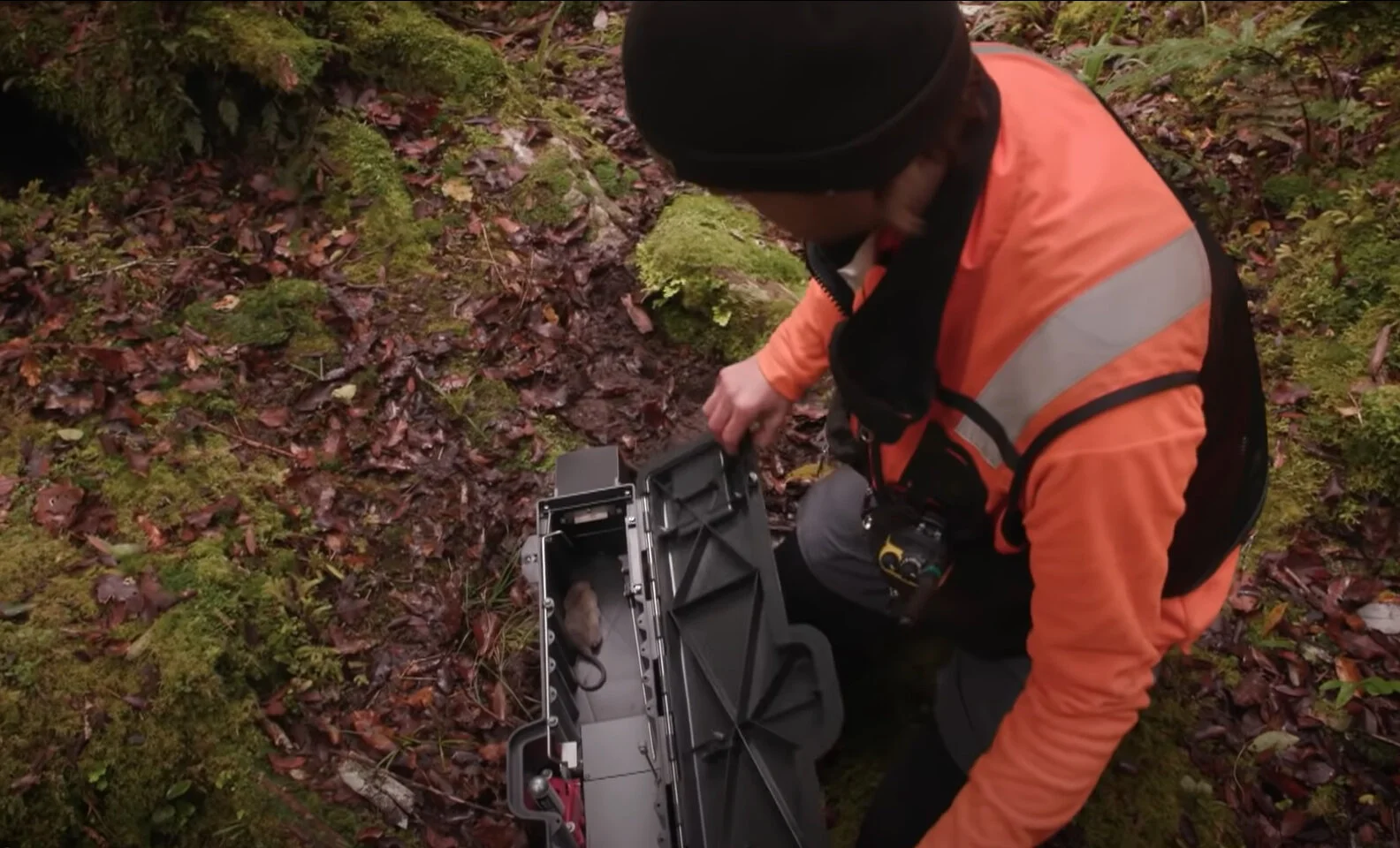As part of a recent current affairs episode looking at the PF2050 mission, a film crew from Australia showcased a part of our work that doesn’t often get airtime – what happens to a rat after it has come to its demise in one of our traps?
While a capture might seem like the natural end point – there is actually a lot more to the story.
ZIP is currently field trialling a highly effective trap that humanely euthanises the rat once caught, allowing the retrieval of an intact body. Once the trap has been sprung, a node on top of the trap pings out an alert to the rangers to go and check it out. As you can see in the video the rat carcass gets safely stowed away in a snaplock bag (or perhaps a retired lunch box) ready for its journey over the main divide to ZIP’s research facility at Lincoln.
Once in the lab the rat carcass undergoes a forensic autopsy. This might sound like something out of a crime show, but the information a single rat can tell us is huge.
From its teeth we can tell how old it is. The whiskers can tell us where the rat came from – if the whiskers glow under fluorescence microscope, then it is an invader who ate a biomarked snack we left for it along the way. And if the rat is a female, we can tell if it has bred and how many times it has produced young – we will know if it was just a solitary rat or if there are another eight or more still to be caught out there.
All the information we’re able to glean from these dead rats help us to unpick the challenge in front of us – and is vital to driving the innovation we need to get to a predator-free Aotearoa by 2050.
You can watch the video either through the embedded viewer on this page or here on Al Jazeera English’s YouTube page. The story features other conservation initiatives, with the main section about ZIP’s mahi starting in just before the 17min mark.

